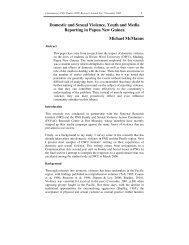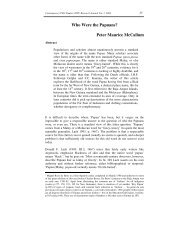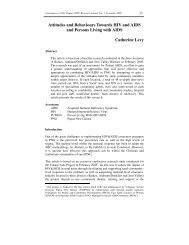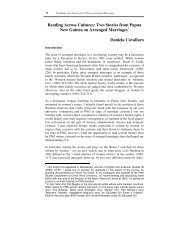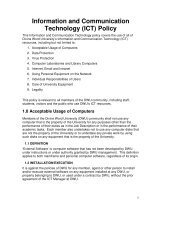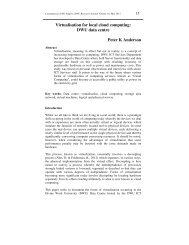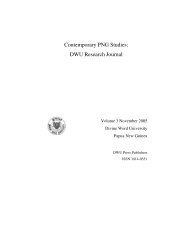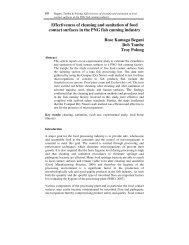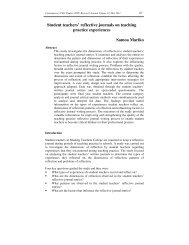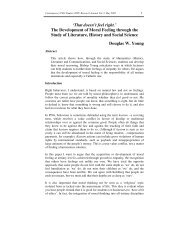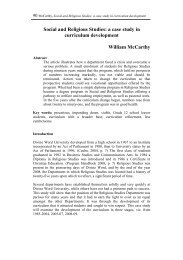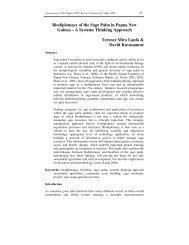A short study of Melpa rehistory - Divine Word University
A short study of Melpa rehistory - Divine Word University
A short study of Melpa rehistory - Divine Word University
- No tags were found...
You also want an ePaper? Increase the reach of your titles
YUMPU automatically turns print PDFs into web optimized ePapers that Google loves.
10Howley, A Short Study <strong>of</strong> <strong>Melpa</strong> P<strong>rehistory</strong>simple display <strong>of</strong> wealth and self importance, visible to all. A row <strong>of</strong> fiftysticks reaching to the waist would indicate the ownership <strong>of</strong> 50 gold lip pearlshells.<strong>Melpa</strong> gender relationshipsDiscrimination and violence against women have always been a part <strong>of</strong> thehuman condition. In all countries, societies and cultures, it is practised to agreater or lesser degree. Even religions and churches which give lip service tohuman rights and equality, continue to discriminate against women bothcovertly and overtly. It is with this background that we consider the genderrelationships among the <strong>Melpa</strong>.The development <strong>of</strong> pig herds had become a necessity for the big-man cultureand the management <strong>of</strong> the herds was an institutionalised exploitation <strong>of</strong>women. Women raised the pigs and so in a sense ‘owned’ them, but it was themen who carried on the exchange and gained the kudos by claiming their ownsuperiority in ownership <strong>of</strong> the means <strong>of</strong> production.The <strong>Melpa</strong> were an egalitarian society but in the game <strong>of</strong> pretension, wheremen, who were competing against other men, allowed each other a certainamount <strong>of</strong> inequality among themselves. But where women were concernedthey quickly closed ranks to declare collective superiority over women(Strathern, 1970, p.533). Some <strong>of</strong> the justification for the discrimination is tobe found in the belief that women endanger men by pollution. Wives bearchildren and thus bring life, but also can destroy men by infecting them withtheir menstrual blood (Strathern, 1970, p.583).Big-men staged a goddess cult ostensibly to promote the health <strong>of</strong> the clan andthe fertility <strong>of</strong> women and pigs. It would seem that the cult was introduced toovercome the problems <strong>of</strong> male-female relations which were corrupted by thesupposed contradiction between the life-giving and death-giving powers thatwomen possess (child-bearing against menstrual pollution) (Strathern, 1970,p.547). Possibly its real purpose was to strengthen male superiority and maledomination as was finally demonstrated by the hundreds <strong>of</strong> pigs slaughtered bythe men during the final feast (Brunton, 1965, p.125).The discrimination was most obvious in the control <strong>of</strong> the product. This wassomething that the men could not give up because it was at the very centre <strong>of</strong>their claim to status. It has been suggested the ritual cults did not implyantagonism between men and women but that they produced a kind <strong>of</strong>separation particularly in the tasks suited to the divisions <strong>of</strong> labour. As abalance to the discrimination, it is likely that women carried on a similarcompetition among themselves by glorying in the prestige <strong>of</strong> their husbands.Status in the reflected glory <strong>of</strong> a powerful and successful husband is apsychological factor in any community.



